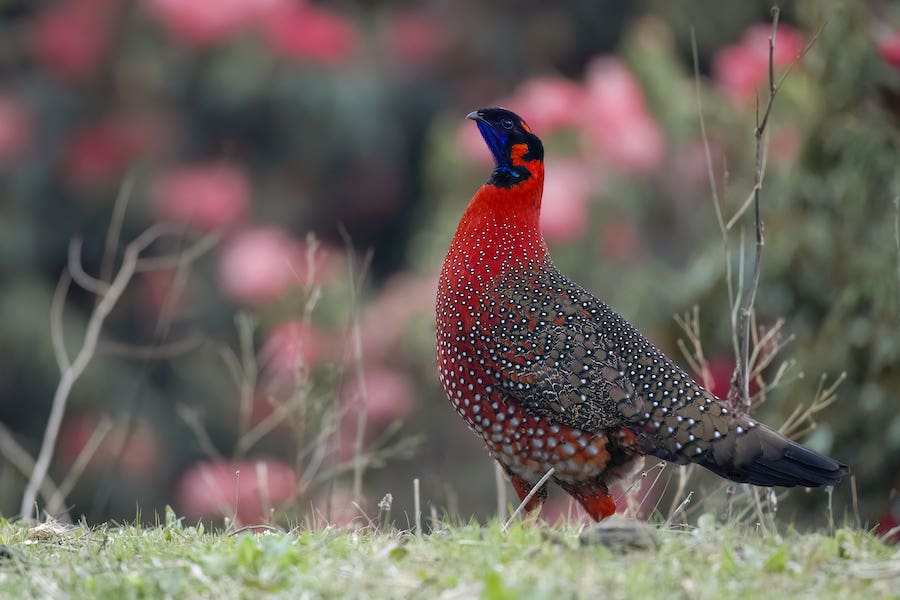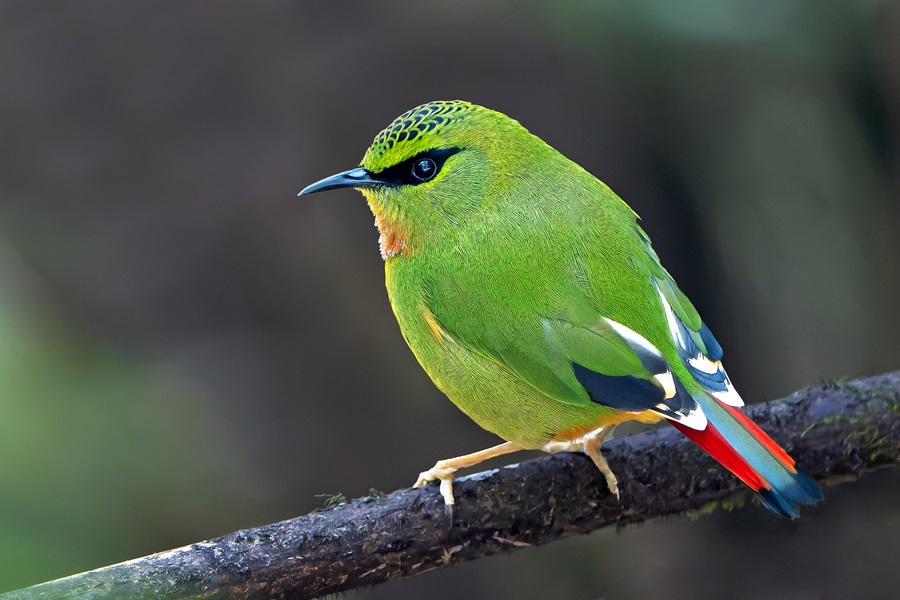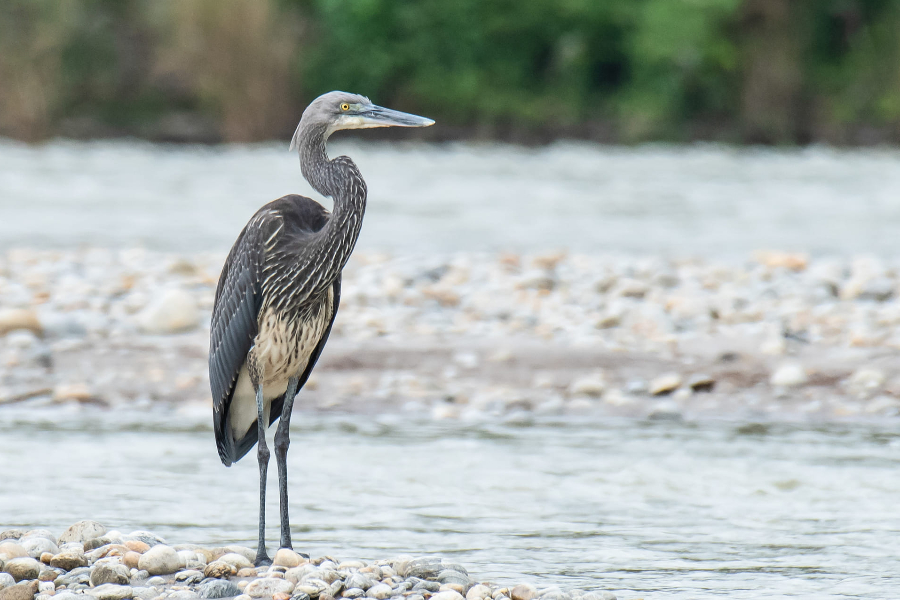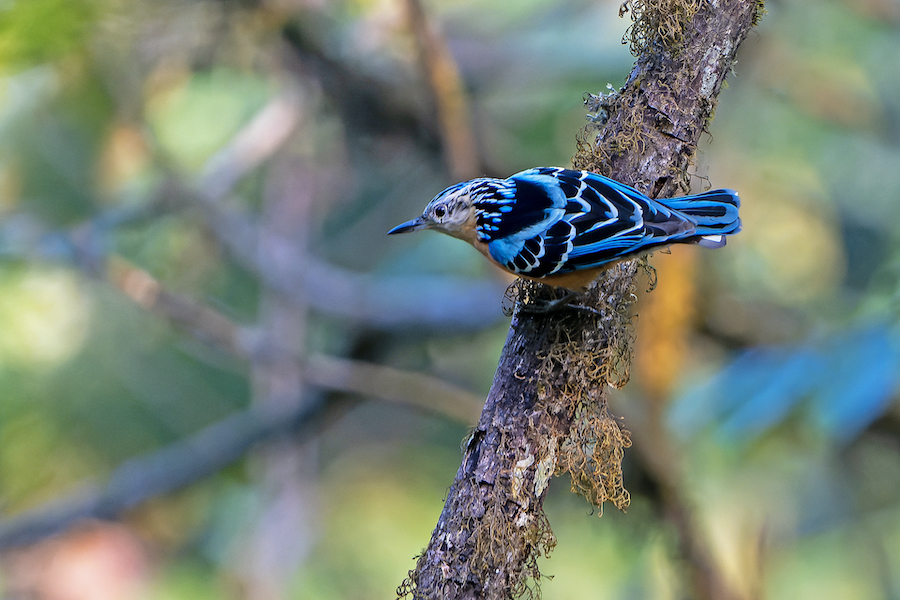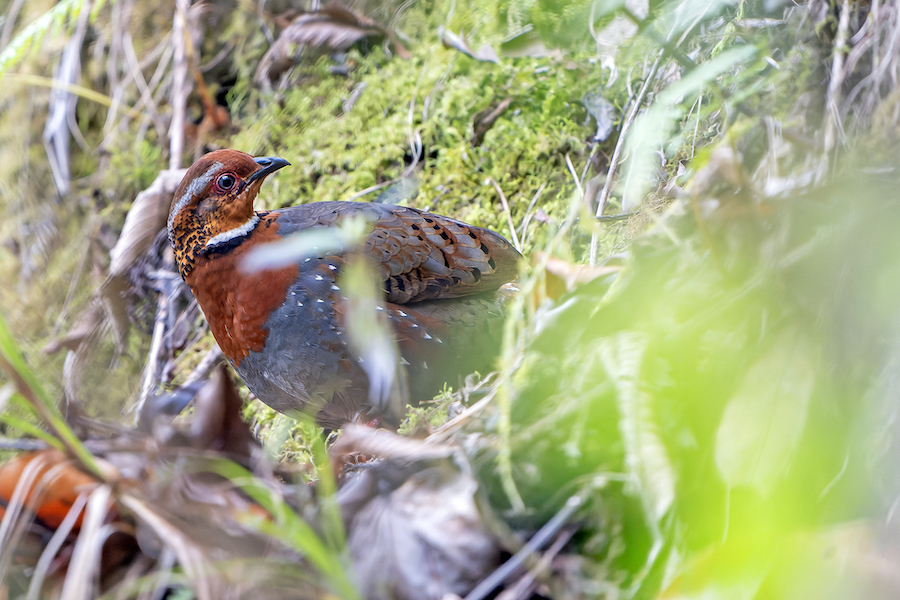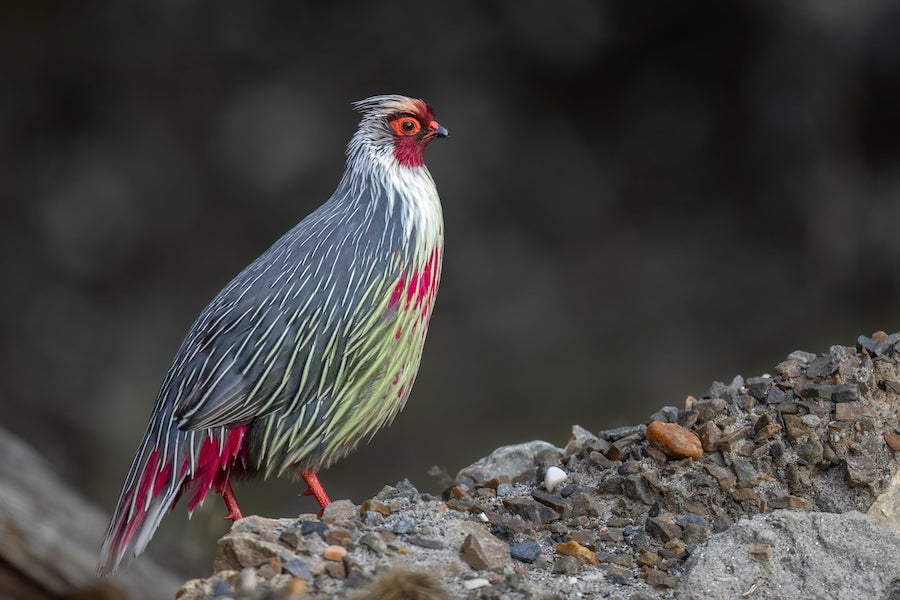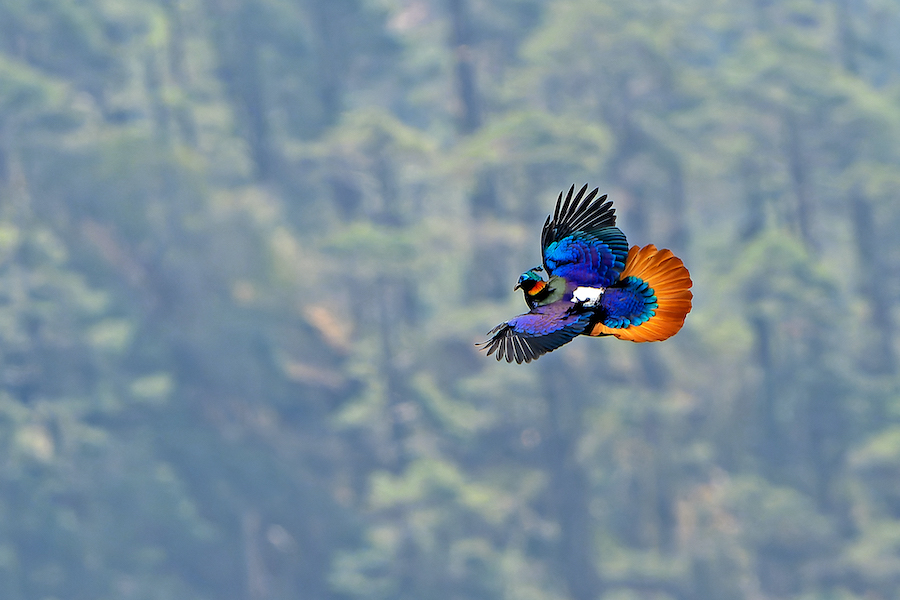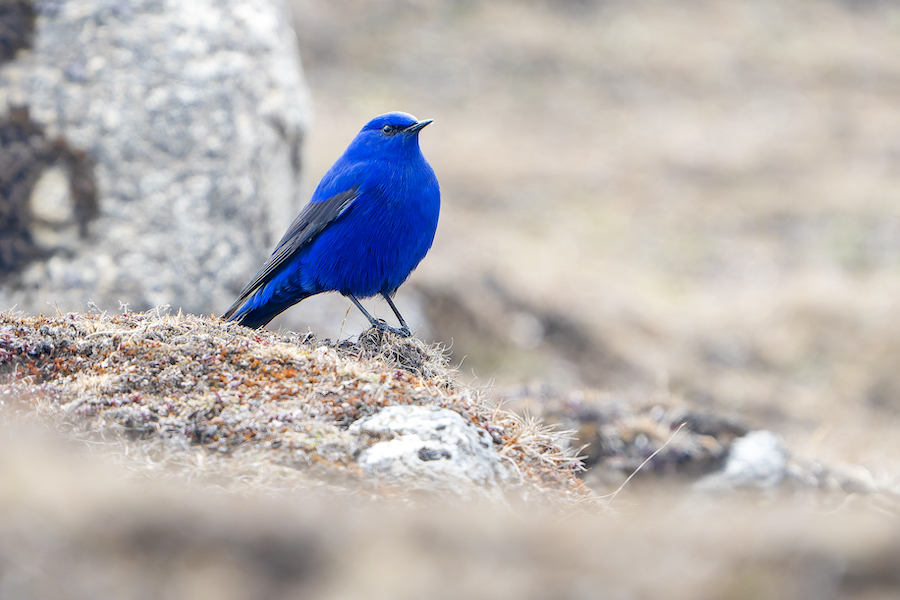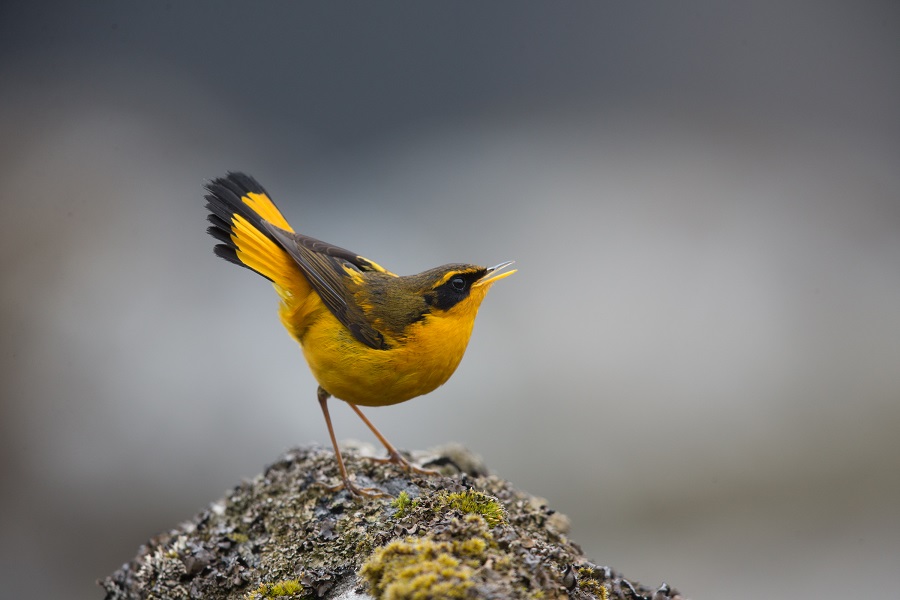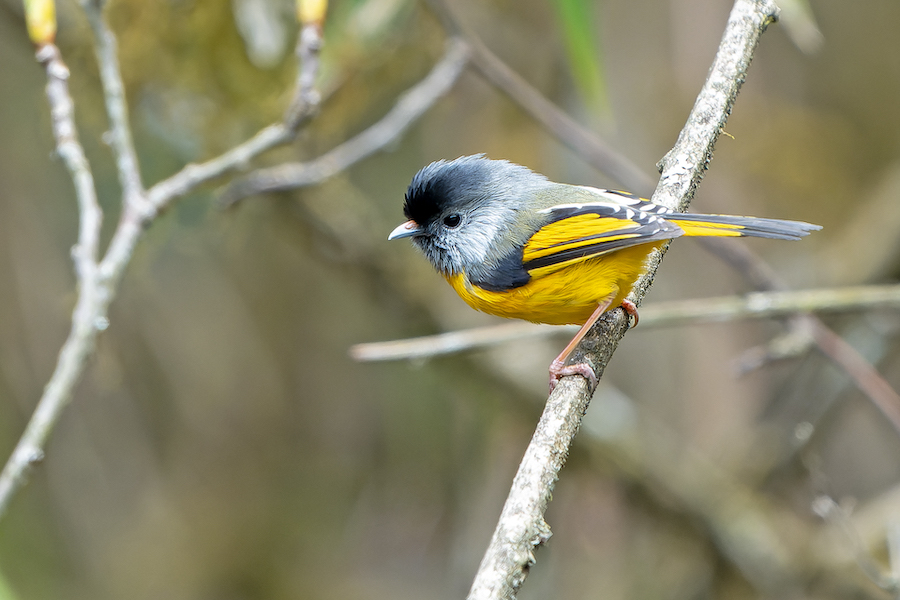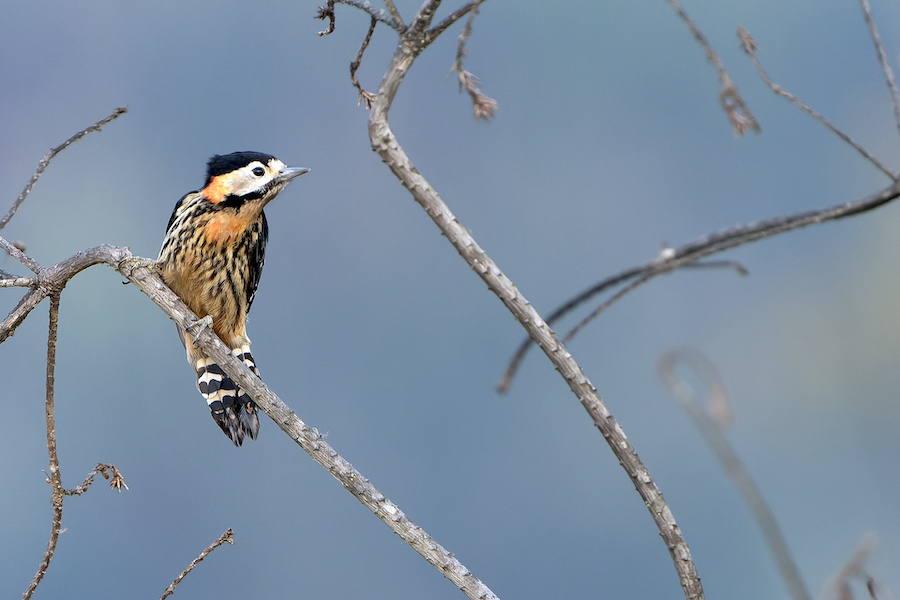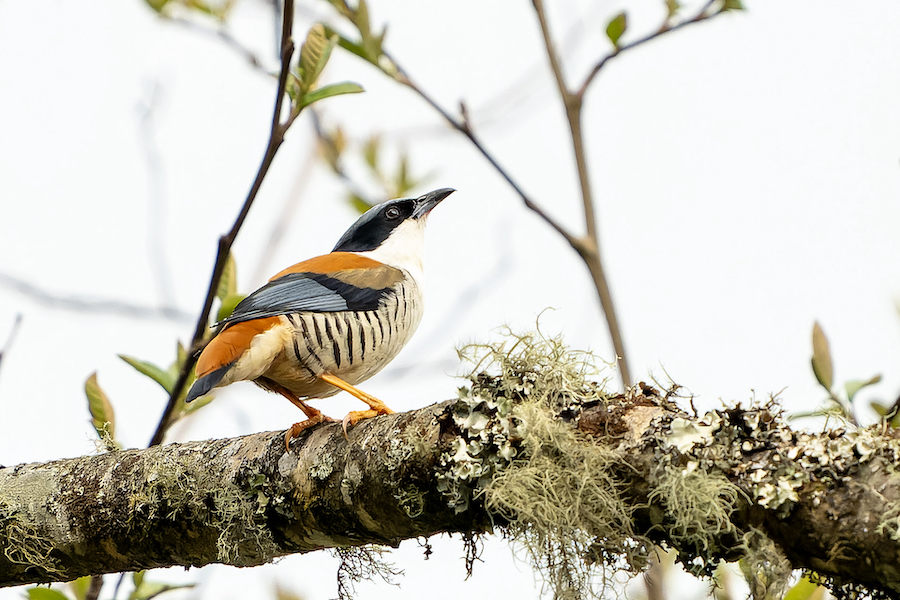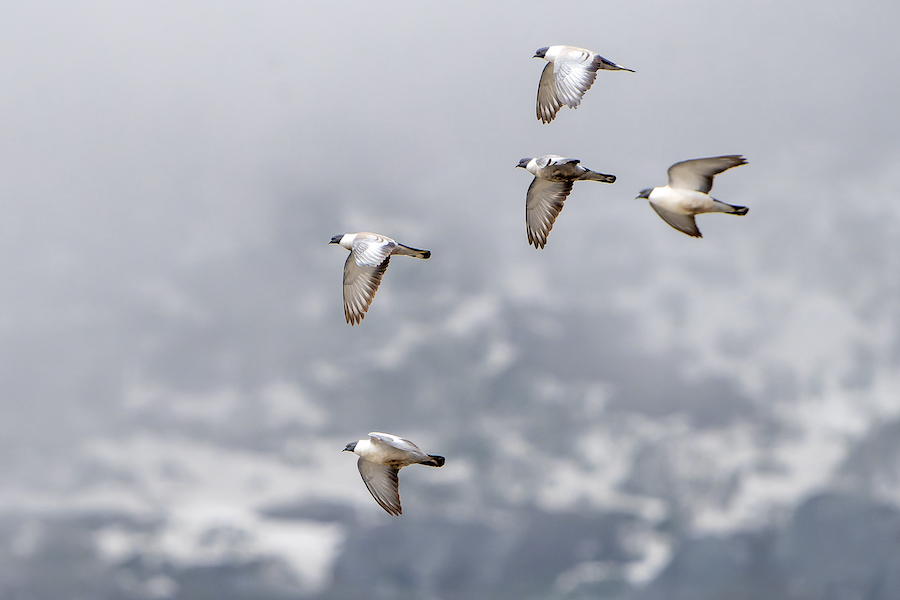Bhutan
The bird kingdom of the Himalaya, a peaceful tour which enjoys some of the best birding in Asia. High chances for sought-after specialties like Satyr Tragopan, Ibisbill, White-bellied Heron, Pale-headed Woodpecker, Fire-tailed Myzornis, Great Parrotbill, and more!
Next Dates
8 April - 23 April 2026 (16 days)
Leaders:
Donna Belder
Group Size Limit:
7
Single Room Supplement: $
600 USD
Deposit: $
750 USD
Price: $
7400 USD
Add a Title
Leaders:
Donna Belder
Group Size Limit:
Add a Title
Single Room Supplement: $
TBD
Deposit: $
TBD
Price: $
TBD
Add a Title
7 April - 22 April 2027 (16 days)
Leaders:
Donna Belder
Group Size Limit:
7
Single Room Supplement: $
600 USD
Deposit: $
750 USD
Price: $
7400 USD
Add a Title
Leaders:
Donna Belder
Group Size Limit:
Add a Title
Single Room Supplement: $
TBD
Deposit: $
TBD
Price: $
TBD
Add a Title
We have made special arrangements so that our tour is significantly cheaper than some might expect for this typically expensive country. Daily flights from New Delhi to Paro cost approximately $650 USD return.
Accommodation:
A mix of comfortable hotels and pleasant safari-style tented camps with generators providing electricity, and hot water for bucket showers on request.
Walking difficulty:
All easy roadside birding.
Tour cost includes:
All accommodation, main meals, drinking water, internal flights (as stated in itinerary), overland transport, tips to local drivers and guides, travel permits, entrance fees, and guide fees.
Tour cost excludes:
Flights before and after the tour start/end, visa, travel insurance, tips to tour leaders, laundry, drinks, and other items of a personal nature.
Day 1: The tour begins this morning at Paro International Airport (PBH) and we will begin birding just nearby, scanning the riverside shingle for the peculiar Ibisbill. There is a great area nearby to see the scarce Black-tailed Crake, where it is always very confiding! We should also spot our first Hodgson’s Redstarts before visiting the world-famous Tiger's Nest Monastery, where a number of widespread forest species will be seen including Blyths Leaf Warbler, Rufous-breasted Accentor, Ultramarine Flycatcher, Yellow-billed Blue Magpie and Rufous-bellied Woodpecker. Overnight in Paro.
Day 2: Ascending to the spectacular alpine meadow of Chele La (3800m), we will be scanning the slopes for our first high-altitude specialties. On the way up we will have our first opportunities to spot Blood Pheasant, Kalij Pheasant, and the exquisite Himalayan Monal! Closer to the top, we can see Indian Blue Robin, Rufous-vented Tit, Buff-barred Warbler, Lemon-rumped Warbler, Grey Crested Tit, Hodgsons Treecreeper, Himalayan Bluetail, Red-headed Bullfinch, Mrs Gould's Sunbird, Green Shrike-Babbler, Southern Nutcracker, Blue-fronted Redstart, Alpine Thrush, Collared Grosbeak, White-winged Grosbeak, Dark-rumped Rosefinch, and Himalayan White-browed Rosefinch, just to name a few. In the late afternoon we will drive to Thimphu, Bhutan's capital.
Day 3: This morning we will visit Dochu La at 3200m, arriving early so to admire a stunning vista of snow-capped peaks if the weather is clear. This area supports good numbers of the amazing Fire-tailed Myzornis, plus specialties like Great Parrotbill, Hoary-throated Barwing, and Rusty-flanked Treecreeper. Other species could include Spotted Laughingthrush, Black-faced Laughingthrush, Chestnut-crowned Laughingthrush, Red-tailed Minla, Green-tailed Sunbird, Crimson-browed Finch and Dark-breasted Rosefinch. Continuing on our winding mountain route through superb stretches of pristine forest, we’ll make our first attempts for Ward’s Trogon. Roving bird flocks contain Darjeeling Woodpecker, Blue-winged Minla, Black-throated Tit, Black-faced Warbler, Whiskered Yuhina, White-browed Shrike-babbler, Rufous-winged Fulvetta, and Yellow-throated Fulvetta. We should reach the town of Punakha in the late afternoon for our overnight stay, and those who wish can visit the world-famous palace of Punakha Dzong.
Day 4: Birding along the Po Chhu, Mo Chhu, and perhaps the Puna Tsang Chhu, we’ll be focused on finding the Critically Endangered near-endemic White-bellied Heron, of which less than 50 birds are known to survive in the world. This is the only place in the world where sightings are still effectively guaranteed, and we may even see this incredibly threatened bird at an active nest, aided by local researchers. There is also a chance to see the rare Pallas’s Fish-Eagle (though it has become more difficult in recent years). The shingle banks of the river are also home to Ibisbill, while we’ll hope for a late Bar-headed Goose or Pallas’s Gull en route to their nesting grounds high up on the Tibetan Plateau. Our camp for the night will be near the White-bellied Heron Conservation Centre.
Day 5: We’ll start our birding right around camp. Excellent wet forest extends downhill to the east, and we will spend the first half of the day birding a very short distance downslope, enjoying first views of many new birds of middle and lower elevations. If needed we will of course search more for the heron. After lunch, we’ll continue a couple of hours to Gelephu, a small commercial hub on the Indian border. Birding on the way can be very rewarding as well, with our first chances to see Beautitul Nuthatch. Time permitting, we might pay a visit to Gelephu Sewage works where we will can add several lowland Indian species to our list.
Day 6: Heading towards Tingtibi, we will make a number of stops at different elevations along this very birdy road. We should get our first views of the magnificent Rufous-necked Hornbill, along with some desirable targets like Asian Emerald Cuckoo, Rufous-chinned Laughingthrush, Red-faced Liocichla, and Scarlet Finch. Trees here are festooned with lichens and clumps of fern, rich foraging for Rufous Sibia and the sought after Himalayan Cutia. If lucky, we might encounter Collared Treepie or Grey-lored Broadbill.
There will be many more widespread species to enjoy such as Black Eagle, Rufous-bellied Eagle, Great Hornbill, Speckled Piculet, Long-tailed Broadbill, Blue-throated Barbet, Blue-bearded Bee-eater, Black-winged Cuckooshrike, White-naped Yuhina, and Golden Babbler. Skulking in the forest and scrub some other birds of the Himalaya could include Blue-winged Laughingthrush, Grey-sided Laughingthrush, White-tailed Robin, Pale Blue Flycatcher, Spot-winged Grosbeak, Tibetan Serin, and Yellow-breasted Greenfinch. We will arrive at Berti Eco-Camp in the afternoon for some initial exploration. This is our first chance for the localized Golden Langur, a species only easily seen in Bhutan.
Day 7: Exploring the spectacularly forested valley towards Zhemgang today, we have a good chance to see Beautiful Nuthatch, plus Chestnut-breasted Partridge, Violet Cuckoo, Pin-tailed Green Pigeon, Rufous-faced Warbler, and probably adding much more to our ever-growing list. We might also start trying to find some of the bamboo specialities which will be possible over the subsequent days. Night at Berti Eco-Camp.
Day 8: Our journey today takes us through an area of extensive bamboo in which we can look for a variety of habitat-specific specialists, including Pale-headed Woodpecker, White-hooded Babbler, White-breasted Parrotbill, Pale-billed Parrotbill, and Yellow-bellied Warbler. This area also hosts a pair of White-bellied Heron, always worth having a backup! Birding our way down another lovely forested gorge, we'll arrive at Panbang for overnight.
Day 9: Today we will be birding the road between Panbang and Nganglam. This stretch offers a great chance to see several uncommon and shy forest birds. Key species include Rufous-vented Laughingthrush, Large Scimitar Babbler, Buff-breasted Babbler, White-hooded Babbler, Collared Treepie, Rufous-backed Sibia, and occasionally the elusive Green Cochoa or Eyebrowed Wren-Babbler. Further along the road, there are more chances for Grey-lored Broadbill and Long-tailed Broadbill, while there is also a chance to see the rare Blyth's Kingfisher or secretive Blue-naped Pitta. Just before reaching Gyelposhing, we will scan the Kuri Chhu River for Pallas’s Fish Eagle, this spot being quite reliable at present. We will try for Hodgson's Frogmouth tonight after dinner. Overnight in Yongkala.
Day 10-11: The forest above Yongkola is encompassed by Thrumsingla National Park, where the famuos Limithang Road ascends dramatically into superb subtropical wet forest, where we can experience some of the finest forest birding of the entire Himalayan region! The hollow bubbling of Golden-throated Barbets begins soon after dawn, as we begin our birding in search of Ward’s Trogon, Beautiful Nuthatch, Black-headed Shrike-Babbler, and the near-endemic Bhutan Laughingthrush.
The forests along this stretch of road are home to Rufous-throated Partridge, Hill Partridge, and Chestnut-breasted Partridge, so we will take some time trying to lure them out. The undergrowth also holds Rufous-throated Wren-Babbler, Long-biled Wren-Babbler, Pygmy Cupwing, the monotypic Spotted Elachura, Slaty-bellied Tesia, and Sikkim Wedge-billed Babbler. We should also see Striated Laughingthrush, White-throated Laughingthrush, Rufous-necked Laughingthrush, and Red-billed Leiothrix, while mixed flocks contain more exciting species like Black-throated Parrotbill, Black-crowned Scimitar Babbler, Golden-breasted Fulvetta and Broad-billed Warbler. Nights at Yongkola.
Day 12: Focusing on the higher elevations of the road through the national park today, we will continue all the way through to Sengor for overnight. The much-wanted Satyr Tragopan occurs throughout this area, and we will also keep an eye out for Gold-naped Finch, White-collared Blackbird, Chestnut-headed Tesia, Scaly-breasted Cupwing, and any other species we may not have already seen. Himalayan Owl is relatively easy to see around our camp after dark. Overnight at Sengor.
Day 13: More birding in the upper elevations of Thrumsingla National Park, continuing our search for Satyr Tragopan, and perhaps Red Panda. At the high pass of Phrumseng La (3800m), Rhododendron thickets are good for both Fire-tailed Sunbird and Fire-tailed Myzornis. This is also a good area for Fulvous Parrotbill, Golden Bush Robin, White-browed Bush Robin, Spotted Laughingthrush, and Slender-billed Scimitar-Babbler. As we continue onwards during the afternoon, Snow Pigeon and Black-rumped Magpie can be seen in agricultural fields along the valley bottoms. Overnight in Bumthang Valley.
Day 14: After morning birding, we'll have another chance for Himalayan Monal if needed before heading west, stopping near Trongsa to search for Tibetan Serin and Nepal House Martin. Arriving later in the Phobjikha Valley (if lucky one or two Black-necked Cranes of the wintering population might remain), aiming to target the highly-elusive Wood Snipe at dusk or the next dawn. Overnight in Phobjikha Valley.
Day 15: Heading back to Paro, we have flexibiltiy to stop at several sites where we have second or third chances for some of the trickier specialties we might still be looking for, such as Yellow-rumped Honeyguide. Overnight in Paro.
Day 16: Morning departures from Paro International Airport (PBH).

